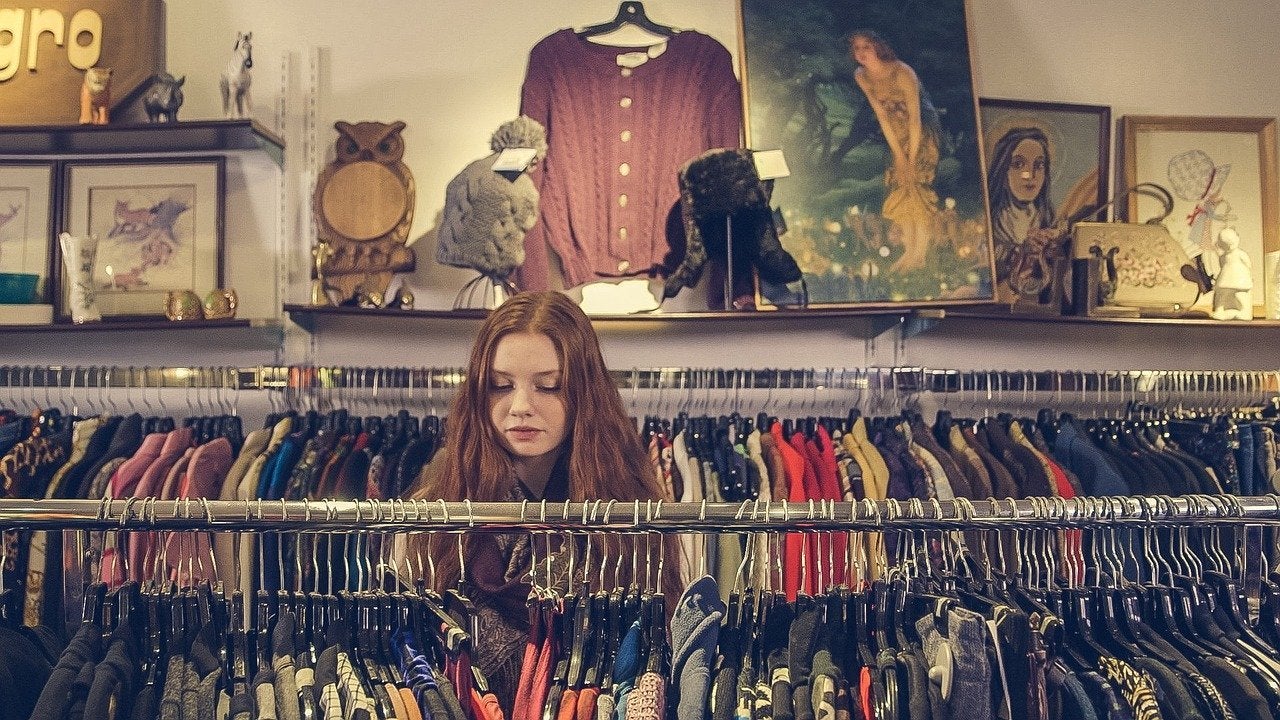There’s a million different things impacting climate change, and with a mere 100 companies being responsible for 71% of the world’s carbon emissions, it can seem like there’s little that we consumers can do about it. On the contrary, our purchasing power can influence brands to modify what they are selling for the better, even if it is just to hop on the “trend” of being environmentally conscious (I’m looking at you, Dove, and your refillable deodorant tin!).
One of the best places to start being a more eco-minded consumer is with what you wear. Clothing and textile production is an incredibly wasteful process, and when combined with our culture of fast fashion (i.e. buying something trendy only to throw it or donate it once it’s out of style) it becomes clear that we need to change our purchasing habits. I’ve compiled a list of my favorite ways to purchase clothing so that less harm is done to the environment.
1. Buy less clothing!
One of the easiest ways to reduce your clothing carbon footprint is by purchasing fewer pieces of clothing in general. If there’s a flash sale at your favorite online store, really consider whether or not you actually need a new pair of shorts, or if the ones you currently have are still serving you well. If you do decide that you could use a new piece in your wardrobe, try to only purchase staple items that can last you for years, such as a good pair of jeans or sturdy boots, instead of something that’s the latest trend. Also, keep in mind that it’s okay to rewear things! You really don’t need a new dress or outfit for every special occasion. Alternatively, try pairing the piece with different accessories.
2. shop second-hand
If you do want to purchase some new clothes, consider purchasing them second-hand! No new resources will be used, and you’ll be potentially saving something from the landfill. For in-person shopping, you can’t go wrong with your local thrift shop or vintage clothing store and, of course, Goodwill. It definitely takes more time than just picking your size off of a clothing rack, but it makes discovering gems all the more worthwhile. If you’d rather shop online, I can’t recommend ThredUp enough! ThredUp resells used clothing, shoes, and accessories, and they have a filtering system that lets you look for what you want based on everything from size to color to neckline (not to mention filtering by brand). They also list how much water and electricity you’ll save by purchasing second hand. Aside from that, there’s online marketplaces like Mercari, Depop, or Poshmark, where you can list some of your old items in addition to purchasing “new” pieces for yourself.
3. Have a clothing swap
Roughly once a year, my sister and I clean out our shared closet and we let each other look through our discard piles for any pieces that we might want to steal. On any given day, there’s a good chance that I’m wearing something that she decided she no longer wanted! Clothing swaps can be as casual or as structured as you’d like, and you can either keep things intimate with a small group of friends, or you can search for any open clothing swaps in your area. I personally enjoy being able to try things on as I find them, so I tend to stick to swapping clothes mainly with my sister and my mom, as it can be fun to try on both genuinely cute pieces as well as some of the middle-school-era pieces that got stuck in the back of our closets that we just can’t seem to let go of.
4. Purchase from ethical and sustainable brands
Not everything can be purchased second hand, like undergarments, and sometimes we just have a specific piece in mind that we can’t find second hand. If you absolutely have to purchase a new piece of clothing, try to purchase from brands that have certifications demonstrating their ethical and sustainable practices, or which use recycled materials in their products. A lot of people are already aware of the athleisure brand Girlfriend Collective, which creates activewear out of recycled plastic bottles, and of Parade, a sustainable underwear brand which uses recycled materials to create super soft, super cute undies (I just received my first purchase of Parade underwear and they’re unbelievably soft!).
5. buy sustainable lines from fast fashion brands
This one may sound counter-productive, but hear me out. A lot of sustainable brands can be expensive, due to paying their workers fair wages and using eco-friendly materials in the production process, so I sometimes turn to sustainable lines from unsustainable brands to find what I need. I recently needed a new swimsuit, which I don’t recommend purchasing second-hand, and all of the sustainable swim brands sold swim separates starting at $40 or above. This definitely wasn’t in my budget, so I turned to American Eagle, as their Real Good collection boasts pieces primarily made from recycled materials. I was able to find a bikini made from 80% recycled nylon at a price that didn’t hurt my wallet. It’s not a perfect solution, but it still signals to whichever brand you’re purchasing from that you’d like to see more sustainable options in the future.
It may seem like a drop in the bucket compared to the looming eco-crisis, but even purchasing a few thrifted pieces instead of new ones can save several gallons of water and kilowatts of electricity that would otherwise be used to create an entirely new piece of clothing. Every little bit can help! And, as YouTuber and eco-minimalist shelbizleee says at the end of her videos, “You cannot do all the good that the world needs, but the world needs all the good you can do.”




